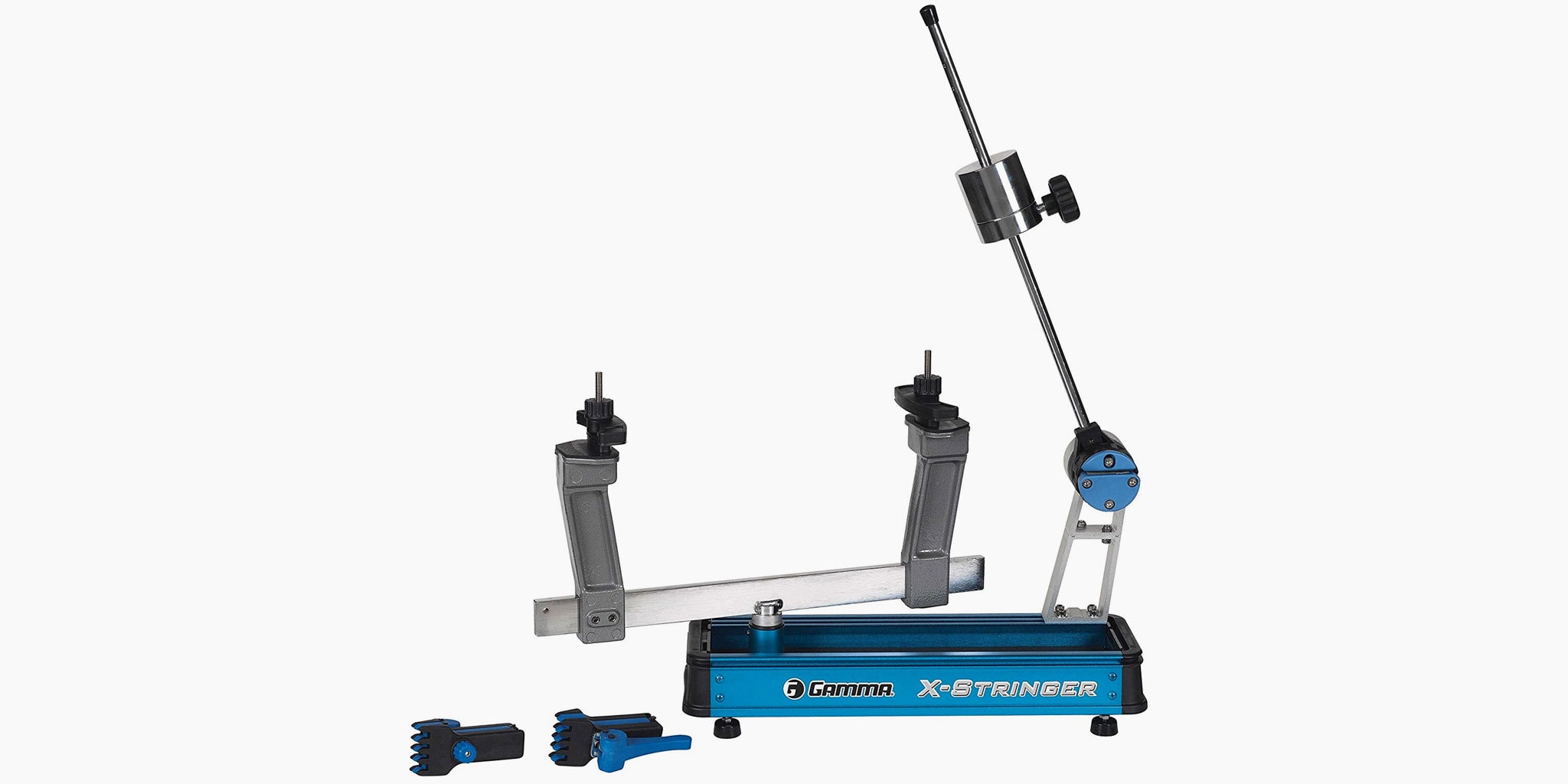As any serious tennis player knows, investing in a high quality racquet can give your game a boost. Certainly, using the proper technique and your athletic ability play key roles in your results. But if you have a really good racquet, you’re going to be ahead of the game.
Unfortunately, even the best racquet starts to wear out after a period of heavy use, just like any piece of equipment. But you can give your tennis racquet new life by restringing it. Tennis racquet strings stretch and lose their tension as you play.
Here’s a look at the best tennis stringing machines on the market for beginning tennis players and experienced veterans of the sport.
- Gamma Sports Racquet Stringing Machines – X Series –Best Overall Pick
- Klippermate Tennis Racquet Stringing Machine – Best Budget Pick
- Gamma Progression ST II Stringing Machine
- Prince NEOS 1000 Stringing Machine – Best Upgrade Pick
- Gamma X-ELS Stringing Machine
And they eventually need replacing. To receive the most benefit from your racquet, you’ll want to give your racquet a restringing on a regular basis. If you just wait to restring until the strings have become weak enough to break, it’s too late. Your game has been suffering from the worn out strings.
You can take your racquet to a tennis pro shop for restringing. This can become an expensive proposition after a while though, especially if you play often enough to require a restringing every month or sooner. That’s where a tennis stringing machine enters the picture.
Comparison Table
| IMAGE | MODEL | FEATURES | ||
|---|---|---|---|---|
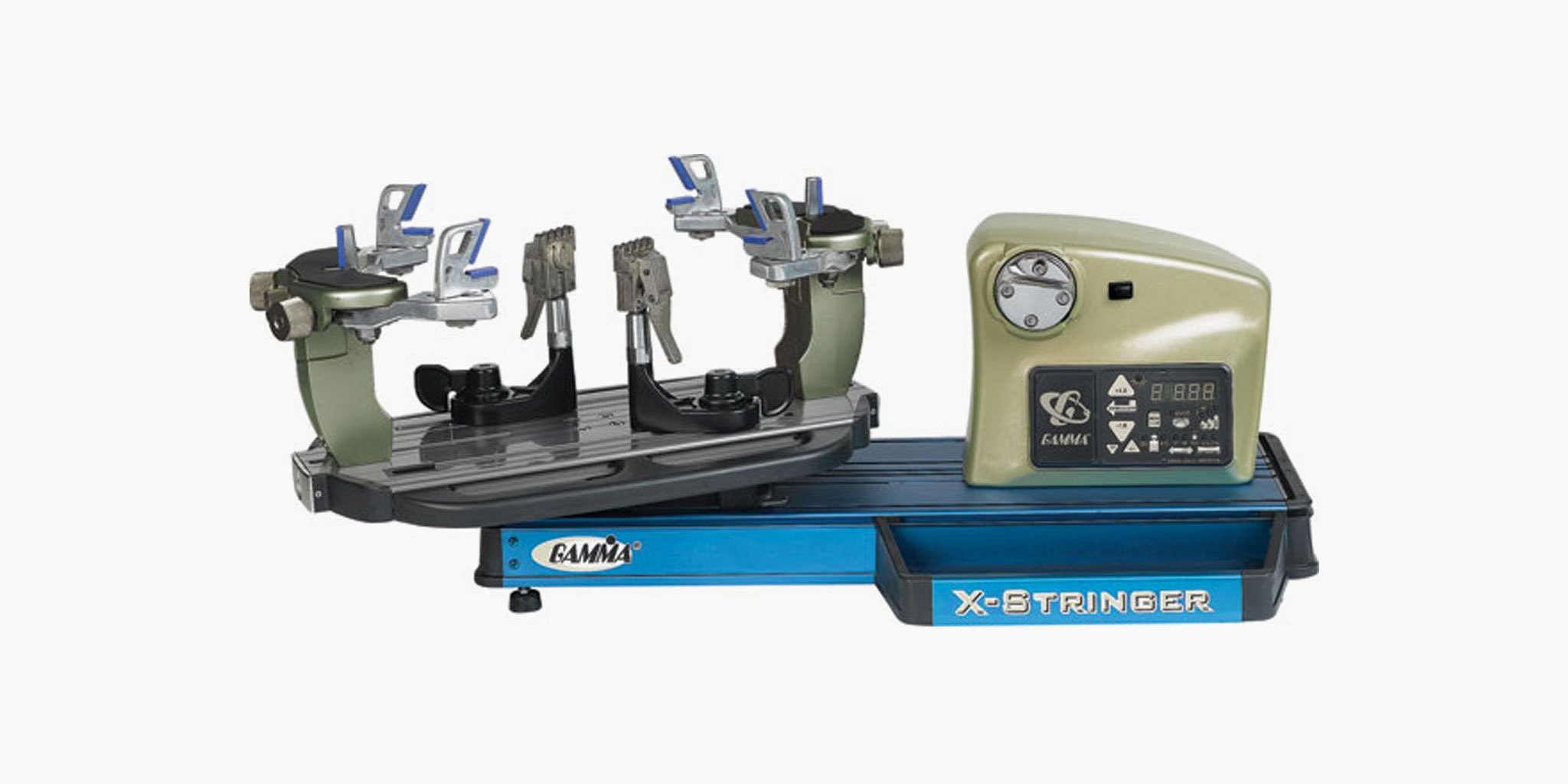 | Gamma Sports Racquet Stringing Machines – X Series |
| View Product | |
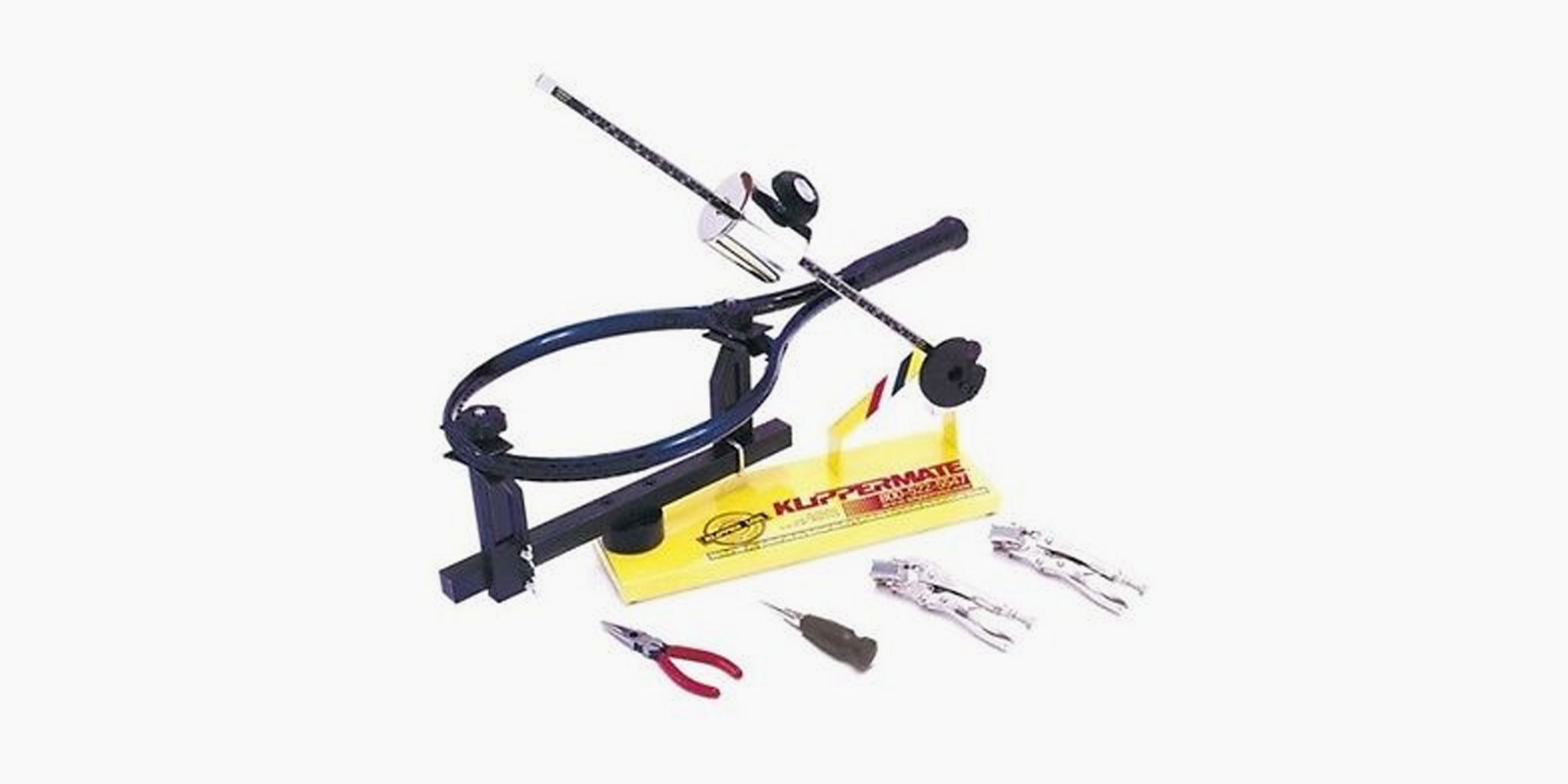 | Klippermate Tennis Racquet Stringing Machine |
| View Product | |
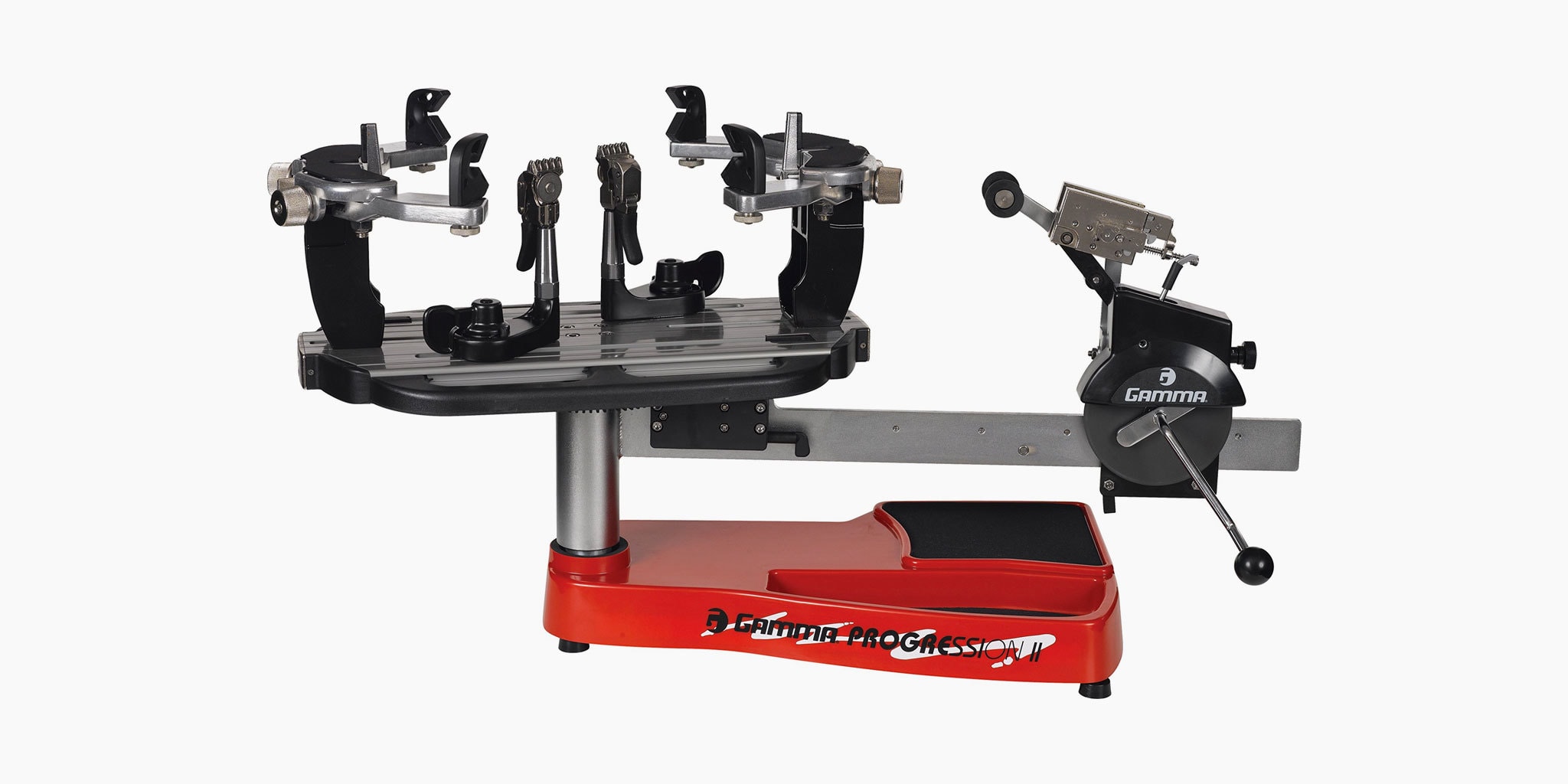 | Gamma Progression ST II Stringing Machine |
| View Product | |
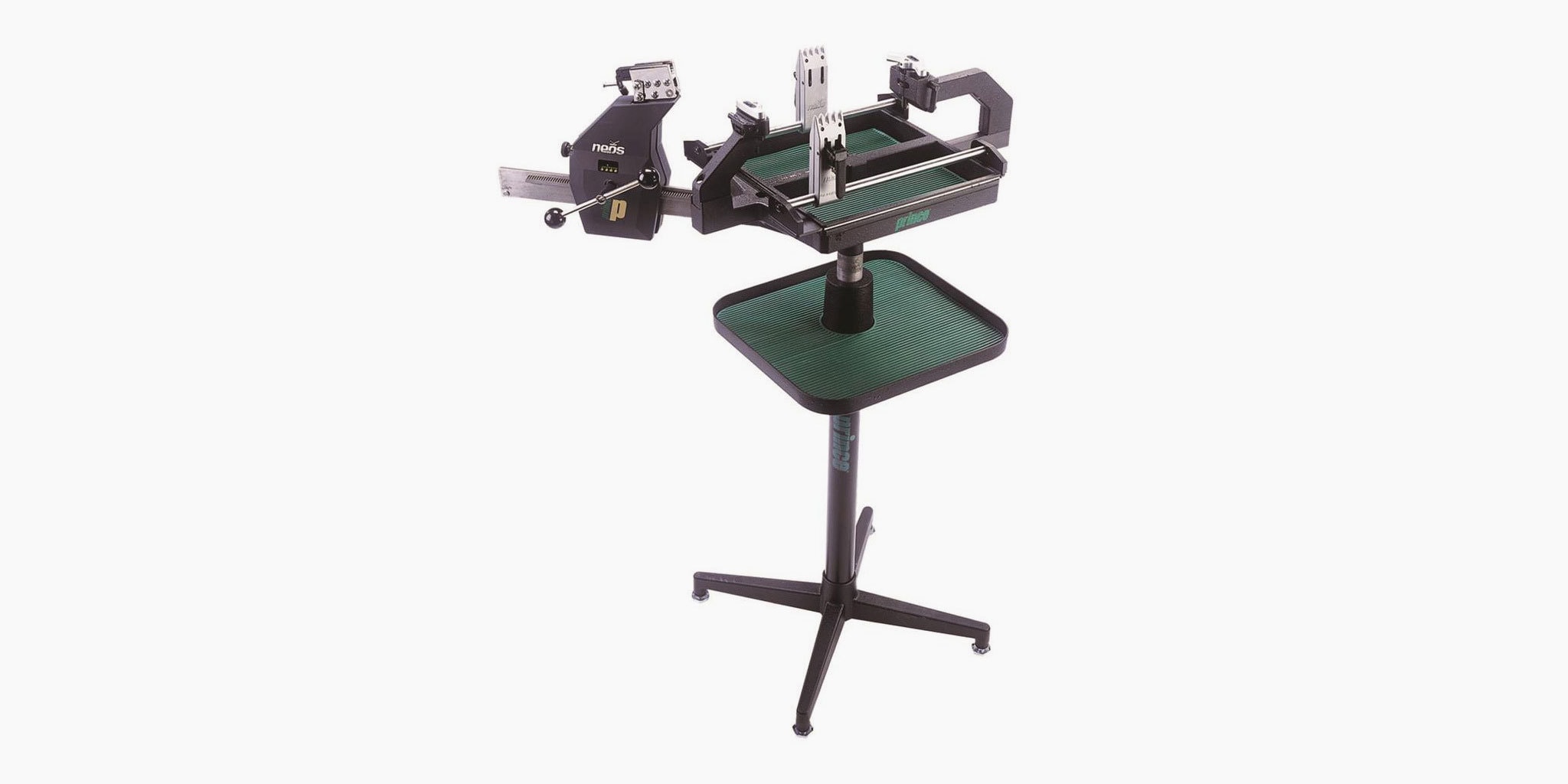 | Prince NEOS 1000 Stringing Machine |
| View Product |
By taking the time to string their own tennis racquets, frequent players may end up saving enough to cover the cost of the machine after several months. And you can help out your playing partners by offering to string their racquets too. (Maybe they’ll even give you a few of those tight line calls the next time you play as thanks!)
Our list of the best tennis stringing machine touches a variety of price points and feature sets, giving all ranges of tennis players the opportunity to find a machine that can meet their needs. Before diving into the list, make sure you understand a bit about how these machines work and what sets them apart. Finding just the right machine to fit your racquet stringing needs will save you time and money over the long haul.
What to Look for in a Tennis Stringing Machine
- Determine your usage pattern: Those people who only will be stringing their personal racquets when needed will require fewer features and probably can live with a budget priced machine. If though, you’re planning to string several racquets within a week, you’ll probably want more features, which will cost more.
- Options for setting tension: You can select from three tension setting processes with a stringing machine. Each process carries a slightly different cost structure and a different level of physical effort to set the tension. Manual machines (sometimes called crank machines) require a lot of physical effort, but they’re inexpensive and accurate. A drop weight machine is easy to use and inexpensive. It requires less physical effort than a manual machine, but it operates slowly. An electronic model is the most expensive, as a computer chip inside the machine measures the tension. Some electronic models use a motor to set the tension, meaning there’s no physical effort required, while others use a manual hand crank.
- Racquet mounting system: Tennis stringing machines vary in the types of mounting systems they use. These systems are differentiated by the number of contact points the machine uses on the racquet’s frame to hold it in place during the stringing process. A machine with two points of contact will be the least expensive and will string the racquet fast. But the racquet frame can become slightly twisted or distorted during the restringing with only two points. Machines with four points or six points of contact will take longer to string a racquet, but the frame will be more stable during the process.
- Types of string clamps: You also will have a choice in the types of clamps your tennis stringing machine uses. A fixed clamp will provide better consistency in the tension of a particular string than a floating clamp, but the fixed clamps are only found on units that carry an above average price point.
- Size of machine: Tennis stringing machines are available in two sizes. For those seeking portability in the machine for taking it to clients or to a tournament, units that fit on a table top are available. The other option is a standalone machine, which has a pedestal for working at a comfortable height. It is less portable than the table top version, but manufacturers typically include advanced features with standalone models. Table top units generally are cheaper than standalone units.
5 Best Tennis Stringing Machines on the Market
1. Gamma Sports Racquet Stringing Machines – X Series – Best Overall Pick
Gamma populates our best tennis stringing machines list quite a bit, and there’s a good reason, as the company offers a more than a dozen individual stringing machines. You’ll find units in a wide range of price points and feature sets, making Gamma a popular choice for these machines. Tennis players also are familiar with Gamma for its racquets, strings, grips, and vibration dampeners. Gamma even manufactures pickleball gear.
The X Series of Gamma stringing machines includes the X-2, X-ST, X-6, and X-6FC. All four designs are table top models, making them easily portable.
X-2: The X-2 makes use of a drop weight tensioning process, which means it requires a bit more time to set up and use than some other options. It can apply between nine and 90 pounds of tension to the strings. The budget-priced X-2 offers a two-point mounting system on the frame, meaning it could cause a bit of a twist in the racquet as you’re stringing it. And it uses floating clamps, which aren’t quite as good as fixed clamps in terms of maintaining the tension on the strings.
X-6: Gamma’s X-6 is the next step up from the X-2 in terms of price point. It’s also a drop weight machine that provides between nine and 90 pounds of tension. But it provides six points of contact when stringing the racquet, which allows for a more precise tensioning and basically eliminates the risk of twisting the frame during the process.
X-6FC: If you like the X-6 but are looking for a unit that can string other types of racquets, including badminton racquets, the X-6FC offers high-end clamps that provide the appropriate tension levels for other types of racquets, as well as tennis racquets. Otherwise, it’s a similar machine to the X-6.
X-ST: The X-ST resides at the top end of the X Series of tennis stringing machines from Gamma, highlighted by its manual stringing process, which sets it apart from the other X Series units. The manual system does require some physical strength to achieve the desired level of tension in the strings, but it offers more precision in tension weight than a drop weight system. Like the X-6 units, it provides six points of contact with the racquet frame.
All of the X Series units ship with a variety of tools you’ll need to string the racquets, and the tools fit in a drawer under the machine, which is a great feature. You’ll be able to easily track your tools and have them with you at all times. Tools can become misplaced with portable machines like these.
Those seeking to perform restringing as a side business or in a tennis pro shop may want more features than are available with the X Series of units from Gamma, although the X-ST’s manual stringing design could fit the bill for some people who need to generate precise tension on a large number of racquets.
Check The Price2. Klippermate Tennis Racquet Stringing Machine – Best Budget Pick
Those seeking a reasonably priced option will appreciate the Klippermate Tennis Racquet Stringing Machine, which is extremely easy to use. Don’t expect to be able to work on a large number of racquets in a short amount of time with this basic unit, but it’ll do the job for the player who only needs to string a racquet occasionally . The Klippermate Tennis Racquet Stringing Machine is a best budget pick among these types of units.
This Klippermate machine offers a table top design, meaning you can use on a variety of flat surfaces. It’s also easy to move to a new location. It does only offer two points of contact for mounting, which could cause the racquet frame to twist a bit during the stringing process.
It’s a drop weight style of stringing machine, so the Klippermate machine isn’t quite as precise in setting the tension as an electronic machine. You’re able to set the string tension at between 20 and 90 pounds.
This versatile machine is able to string tennis, racquetball, and squash racquets, and you can add the ability to string badminton racquets with a little extra hardware (for an extra cost).
The Klippermate web site is a good area for finding answers to your questions about stringing tennis racquets, And the Klippermate Tennis Racquet Stringing Machine ships with a thorough set of instructions, simplifying the entire process for beginners.
Check The Price3. Gamma Progression ST II Stringing Machine
Gamma returns to our list with the impressive Progression ST II Stringing Machine. It carries a higher price than the X Series units discussed above.
The Progression ST II has a manual tension setting design, meaning you’ll use a hand crank to set the tension level. You can set the string tension at between nine and 90 pounds. Gamma provided six points of contact when working on a tennis racquet frame with the ST II. This will help the racquet to maintain its shape during the stringing process.
The table top model doesn’t weigh as much as you’d think when looking at it, making the ST II a great option for carrying with you to a friend’s house or to a tournament. The base contains two drawers for maintaining your collection of tools and keeping them nearby at all times. Gamma ships a variety of tools with the Progression ST II, including awls, a hex wrench set, and two pliers.
Check The Price4. Prince NEOS 1000 Stringing Machine – Best Upgrade Pick
If you’re looking for an advanced tennis stringing machine, it’s tough to go wrong with the tried and true Prince NEOS 1000 Stringing Machine. This model has existed for more than two decades, yet it remains a popular design that many tennis pro shops rely on to perform the restringing process.
Prince introduced an upgrade to the NEOS 1000 several years ago with the NEOS 1500, but the company has promised to continue producing the NEOS 1000 and making replacement parts for it, so consumers can feel comfortable selecting the NEOS 1000.
The Prince NEOS 1000 uses a manual tension design, meaning it does require a bit of physical strength to apply the tension to the strings. But it’s able to achieve extremely accurate tension settings. The NEOS 1000 has two points of contact on the racquet frame.
The NEOS 1000 is the first standalone stringing machine on our list, meaning it’s not as portable as the options listed above. However, you will be able to work on this model at a height that’s comfortable for you, which is nice when you’re restringing a large number of racquets over a long period of time. If you currently own a basic stringing machine and are looking for an upgraded unit, the NEOS 1000 is a strong choice.
Check The Price5. Gamma X-ELS Stringing Machine
If you can fit the Gamma X-ELS Stringing Machine in your budget, this model is very easy to use. The X-ELS has a table top design, making it portable.
It makes use of an electronic tension system, which causes the X-ELS to be an expensive unit. But for those who don’t want to hand crank the string tension, the electronic design is a great option, as it both measures and applies the tension automatically.
All you have to do is enter the desired tension on the keypad and let the X-ELS do the rest. String tension is available between 11 and 90 pounds.
And Gamma gave the X-ELS a design with six points of contact on the frame, allowing it to maintain its shape during the restringing process.
3 Tips for Stringing a Racquet
- Understanding string tension: The tension on a tennis string is measured in pounds, equal to the amount of pressure applied to a particular string when the stringing machine pulls it. Racquets that have a lower string tension will give the player more power. Strings with less tension will act more like a trampoline, allowing the ball to bounce back with more power. A high string tension will give the player more control over his or her shot by using spins. Your tennis racquet should have a string tension range printed on it somewhere to help you figure out the maximum and minimum tensions you can use.
- Types of tennis strings: You can pick from four types of tennis strings. Synthetic gut strings are the least expensive, while natural gut are the most expensive. Nylon, polyester, and Kevlar strings are mid-range strings. Each type of string has a different feel, so you’ll want to test some different strings to find one that fits your game. The lower priced strings will last longer and will work better for less experienced players who tend to mishit. If you need a more precise shot making type of string, natural gut is the way to go, but it won’t last as long as a synthetic string.
- Deciding when to restring: Because you don’t want to suffer a broken string in the middle of a tournament, you may want to restring your racquet on a regular basis … before any strings break. When trying to decide how often to restring a racquet, one rule of thumb says if you play tennis four times a week, you’ll probably want to restring the racquet at least four times per year. If you play a serious brand of tennis, restringing more often will serve you well.
Sources & Further Reading
- Enhance Your Game with the Right Tennis String Tension, Tennis Companion
- How to String a Tennis Racquet, WikiHow
- About Gamma Sports
- Prince Sports, Wikipedia
- Best tennis bags for women on Amazon
